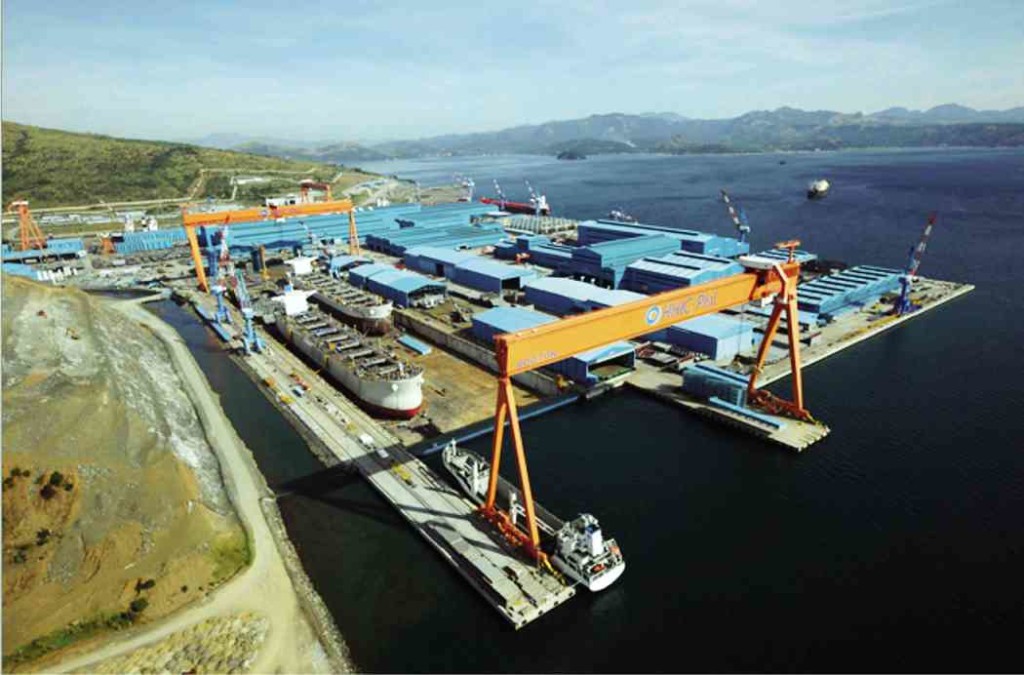Making Subic the main anchor of national growth
Most critics of the worsening congestion in Metro Manila have been prophets of doom. Today, I am going to be a prophet of hope.
I have prepared, with assistance from several experts, a cluster of specific proposals on major infrastructure building that will begin to shift the momentum of development north—toward Subic and Clark.
In our frantic search for solutions that will work, we keep on forgetting about Subic and Clark and their enormous but lightly tapped potential to become the new centers of manufacturing, industry, finance and high technology.
Moribund for years, the Subic-Clark enclave could begin to bloom into a “corridor of new wealth” for our people.
Its strategic location, some 100 kilometers north of Manila, places it in the epicenter of development as a driver of economic growth.
Compared to other cities, the Subic-Clark corridor “is the only place that has a sustainable future” and its “full-blown expansion is the key” that would trigger an inflow of investments.
Key factors
First is President Duterte’s historic China pivot and an independent foreign policy, inaugurating a new Philippine-China economic partnership and putting the Philippines in the mix of the world’s fastest-growing region. Second is the government’s commitment for infrastructure spending of up to 6 to 8 percent of gross domestic product (GDP), on a scale never before seen.
Third is the immediate peace talks with Communist insurgents and Muslim separatists, ushering in a ceasefire that could be a prelude to a permanent peace and the silencing of rebel guns. Fourth and last, at least for now, is the inauguration of the new national vision called “AmBisyon 2040.”
Cauldron in Manila
The inherited traffic mess in the metropolis has worsened because of the lack of foresight and of political will. As early as 2012, the Japan International Cooperation Agency (Jica) released a study and a “dream plan” roadmap for improving the country’s transportation system, warning that we are losing P2.4 billion a day to traffic gridlocks. Jica’s warning was echoed four long years later in the Senate. Sen. Grace Poe, in her recent sponsorship speech seeking emergency powers for the Executive, asked Congress to finally declare “a national emergency with regard to traffic congestion.”
Today, by the latest estimate, we are losing P3 billion a day due to this.
The most viable and doable solution lies outside the metropolis. I am offering the following ambitious infrastructure development projects that have to be built simultaneously, not sequentially, to make an immediate impact.
First is the construction of a 100-km “Multi-Modal Elevated Expressway and Railway” from Subic Port to the Port of Manila. By directly linking the two, the expressway ensures the shortest possible travel time between these key international shipping gateways. The indicative project cost of P100 billion is the equivalent of only 34 days of cumulative business losses resulting from Manila’s traffic congestion. The economic benefits from the project would be immediate and enormous. It would generate increased container volume at Subic which, in 2016, has handled less than 200,000 twenty-foot equivalent unit containers or TEUs, which is only one-third its rated capacity of 600,000 TEUs.
By shifting cargo transit to Subic Port, it would dramatically relieve port congestion that has built up in the Port of Manila’s two container terminals. It would speed up the movement of goods in and out of the Port of Manila to serve its giant market of 20 million consumers; and it would finally help to decongest heavy traffic in the metropolis.
Second is increasing the capacity of Subic Bay Port’s New Container Terminals 3 and 4 to 600,000 TEUs, bringing its total handling capacity to 1.2 million TEUs. With the “Age of Asean Integration” now upon us, expanding Subic’s capacity is necessary.
To fully realize this, the third project must be undertaken simultaneously. This is the 17-km Bypass Road connecting the port terminals directly to the SCTEx (Subic-Clark-Tarlac Expressway), and envisioned for the exclusive use of container trucks going in and out of Subic Port.
Fourth project is a 25-km Bypass Road from Tipo, Subic to Castillejos, Zambales en route to the Redondo Peninsula to give way to a 3,000-hectare new industrial park designated as “Subic 2.” Fifth is the upgrading and total facelift of the Subic Bay International Airport to bring it up to international standards in handling all types of cargo as an intermodal (Airport-Seaport) logistics hub and a strategic area for cruise destinations (mother ports), junket trips, VIP Jet services and other-related air travel.
Sixth is a railway linking Subic and Clark under the auspices of the Bases Conversion Development Administration (BCDA), combining their strategic location and new facilities into an economic clout to draw in multibillion-dollar investments and business operations by leading global companies.
Economic benefits
The thousands of new jobs to be generated from these projects is our top priority, because this is the mandate of the SBMA. Up to 100,000 new jobs could be created from the new investments.
But we offer these projects as viable solutions to the massive port congestion and traffic gridlock in the metropolis.
The combined cost of the Subic projects is only $2.8 billion.
If placed side by side with the enormous losses of P3-billion daily, or $21.6 billion a year from the traffic crisis, this is a small investment, but critically significant for the country to keep its engines of growth humming.
The high gear of global business and financial engines must now replace what had been, in years past, the deafening roar of US war machines operating out of Subic and Clark.
We want it known to all that at Subic, it is not “business as usual” anymore. It is now a zone of best business practices.-contributed
The author is Chair of Subic Bay Metropolitan Authority

